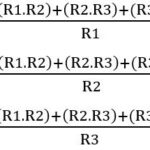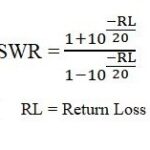The CDMA reverse link uses a different coding scheme to transmit data. Unlike the forward link, the reverse link cannot support a pilot channel for synchronous demodulation (since each mobile station would need its own pilot channel).
 The lack of a pilot channel is partially responsible for the reverse link’s lower capacity than the forward link. In addition, Walsh Codes cannot be used for channelization since the varying time delays from each mobile to the base station destroys the orthogonality of the Walsh Codes (varying arrival time makes the Walsh Codes non -orthogonal).
The lack of a pilot channel is partially responsible for the reverse link’s lower capacity than the forward link. In addition, Walsh Codes cannot be used for channelization since the varying time delays from each mobile to the base station destroys the orthogonality of the Walsh Codes (varying arrival time makes the Walsh Codes non -orthogonal).
Since the reverse link does not benefit from non-interfering channels, this reduces the capacity of the reverse link when compared to the forward link (all mobiles transmitting interfere with each other). To aid reverse link performance, the 9600 bps voice data uses a one-third rate convolutional code for more powerful error correction.
For the 14400 bps vocoder, the convolutional encoder is only a half rate encoder that doubles the data rate. Thus the data rate coming out of the convolutional encoder is the same for either the 9.6 or 14.4 kbps voice channels. Then, six data bits at a time are taken to point at one of the 64 available Walsh codes.
The data, which is at 307.2 kbps, is then XOR’ed with the long code to reach the full 1.2288 Mbps data rate. This unique long code is the channelization for the reverse link.
The Reverse Link Traffic Channel Physical Layer in CDMA handles transmission from the mobile station to the base station. It includes the following components:
1. Channelization:
Data is divided into channels including Fundamental Channel (FCH), Supplemental Channel (SCH), and Dedicated Control Channel (DCCH), depending on the data rate and application.
2. Encoding and Interleaving:
User data is convolutionally encoded to add redundancy for error correction. The encoded bits are then interleaved to distribute burst errors across time.
3. Power Control Bits Insertion:
Transmitter inserts power control bits to help the base station manage uplink power levels effectively.
4. Modulation:
Data is modulated using QPSK or OQPSK for efficient bandwidth usage and better performance in multipath environments.
5. Spreading:
The signal is spread using Walsh codes for channel separation and a long PN code for user separation and privacy.
6. I/Q Mapping and Transmission:
The spread signal is separated into In-phase (I) and Quadrature (Q) components and transmitted over the air to the base statio


